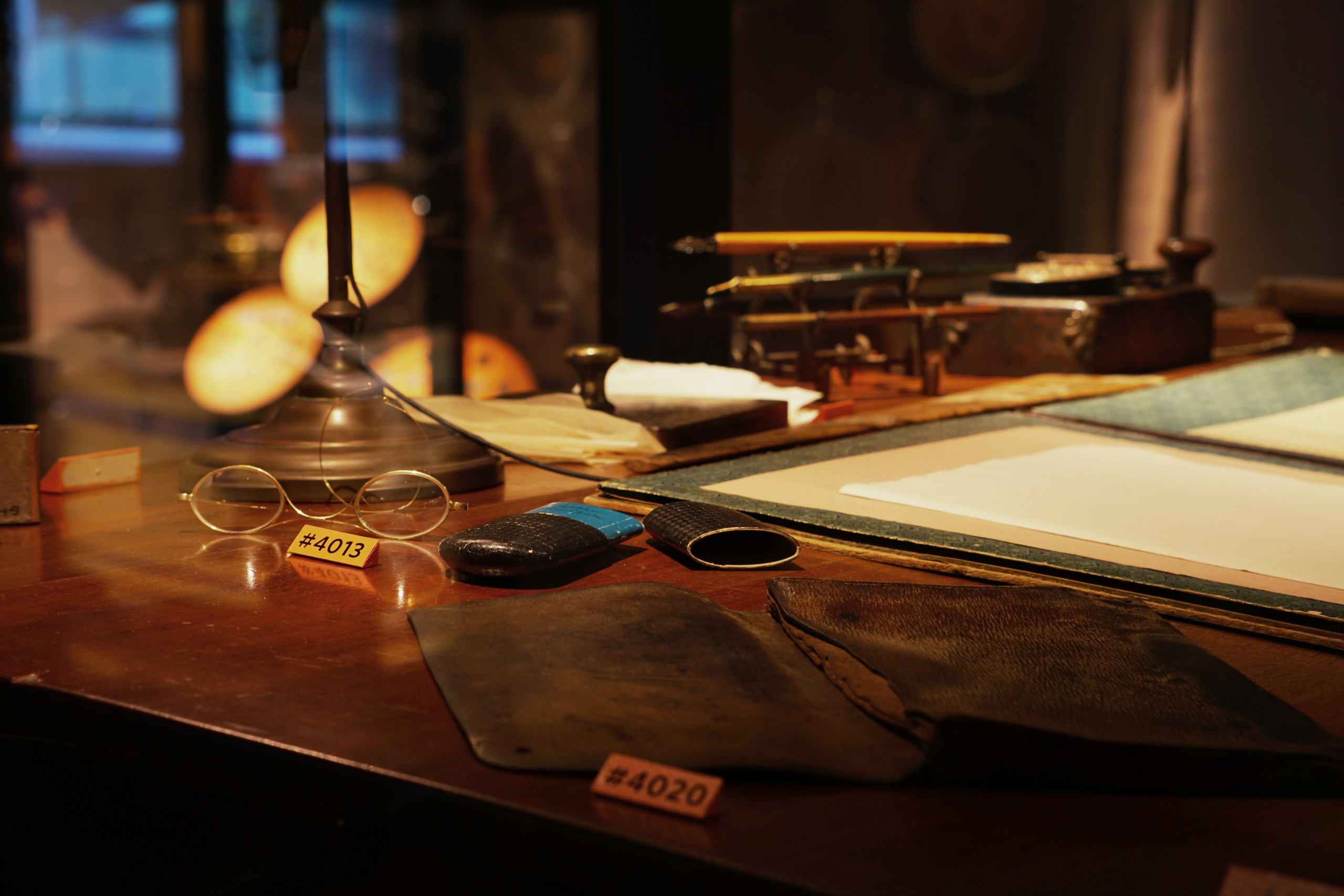
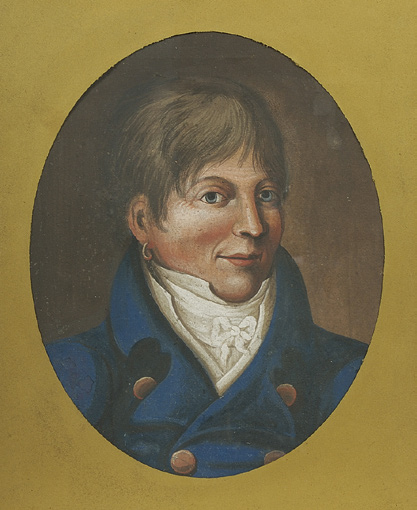
4001
Painting depicting
Eduard Ludendorff
Eduard Ludendorff founded Sweden’s first savings bank. Ludendorff was born in 1790 in Stettin, in present-day Poland, and came to Gothenburg at the age of 18. In a very short period, Ludendorff managed to establish himself in the Swedish business market.
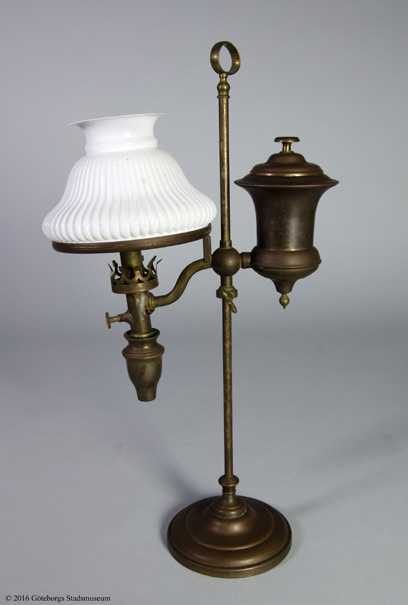
4002
Lamp
A lamp of a moderate or tipping model, likely manufactured in the latter part of the 19th century. The lamp is made of brass and has a white porcelain shade with a ribbed surface.

4003
Paper knife
A paper knife made of ivory. A paper knife is also known as a letter opener, used for both slitting open envelopes and cutting uncut pages in books.
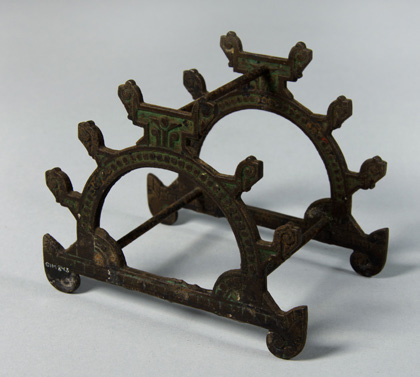
4004
Pen holder
An iron pen holder, with space for seven pens. The pens lie horizontally in the stand, which consists of two gables held together by three rods.
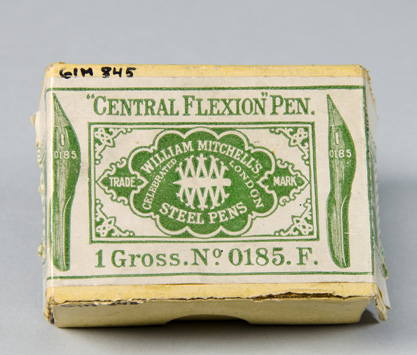
4005
Box with nibs
A yellowish-white box with nibs for fountain pens. The container holds a large quantity of metal nibs. The user would insert a nib into a pen holder and then dip the nib into ink.
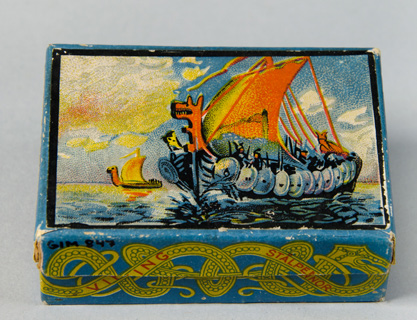
4006
Painted box with nibs
A box with nibs for fountain pens. The box contains a large number of metal nibs. The user would insert a nib into a pen holder and then dip the nib into ink.

4007
Blue box with nibs
A blue case with nibs for fountain pens. The case contains a large number of metal nibs. The user would insert a nib into a pen holder and then dip the nib into ink.
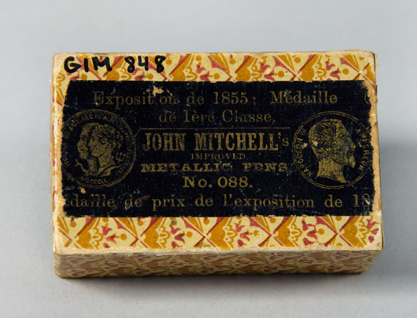
4008
Brown box with nibs
A box with nibs for fountain pens. The box contains a large number of metal nibs. The user would insert a nib into a pen holder and then dip the nib into ink.

4009
Box with nibs depicting Shakespeare
A box with nibs for fountain pens. The box contains a large number of metal nibs. The user would insert a nib into a pen holder and then dip the nib into ink.
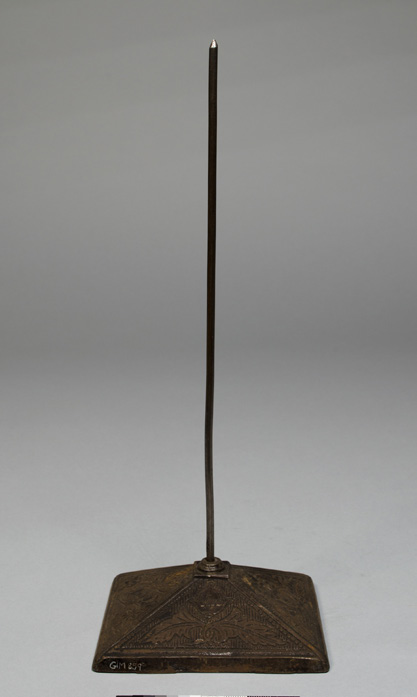
4010
Paper holder
A paper holder, also known by another term as a paper spike. The holder has a rectangular, pyramid-shaped iron baseplate. In the center of the baseplate, there is a spike, and on this spike, various documents and papers were impaled.
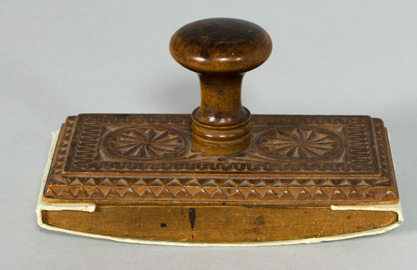
4011
Blotting paper press
A blotting paper press made of wood. The wood is carved using the intaglio carving technique, creating decorative geometric patterns. The bottom of the press bulges outward and is covered with blotting paper. This blotting paper was used to blot away excess ink from the paper of the person writing.
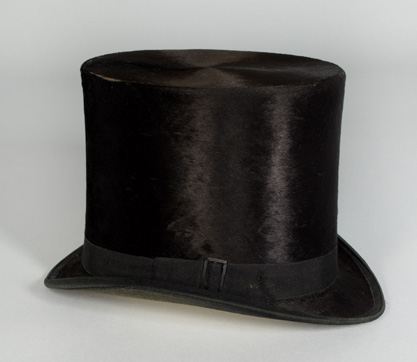
4012
Top hat
A top hat made of black felt, a velvet-like fabric with long silk pile. It was manufactured in the 1880s. The hat is adorned with black grosgrain ribbon and a small rectangular buckle.
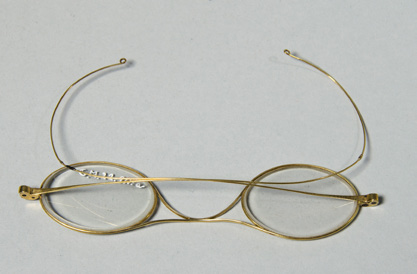
4013
Glasses with case
A pair of eyeglasses with oval lenses in thin frames made of yellow metal. The lenses measure 3.6 x 2.5 cm, and the case itself is 13 cm long and 4.3 cm wide. The case is decorated with checkered black paper. When you open the case, it says ‘Dad’s glasses.’
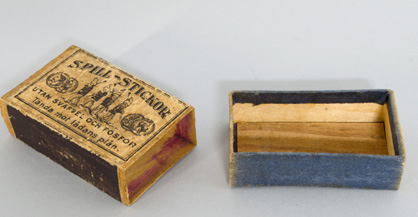
4014
Match box
A paper match box with a wooden match striker. On two of the long sides, there are striking surfaces used to ignite the matches. The label on the top reads, ‘Safety matches without sulfur and phosphorus. Strike against the box’s striking surface.

4015
Cigar stand
A cigar ashtray stand made of brown-painted ceramic. The painting is designed to mimic metal. The stand features an ashtray and a holder for cigars. It is adorned with a child and a dog. It is likely manufactured in the 1860s.
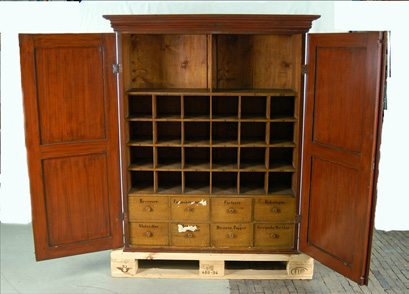
4016
Office cabinet
A cabinet from the trading firm A. Magnus & Co, Magasinsgatan 24, Gothenburg. The cabinet consists of an upper and a lower section in wood, both equipped with double doors. It is made of red mahogany imitation. The cabinet stood in the largest office room at the trading firm
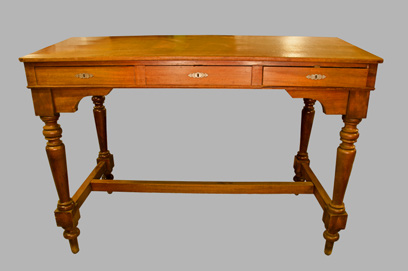
4017
Writing desk
A writing desk from the trading firm A. Magnus & Co, Magasinsgatan 24, Gothenburg. The writing desk is tall and has a slanted surface. It is made of light-brown stained mahogany.
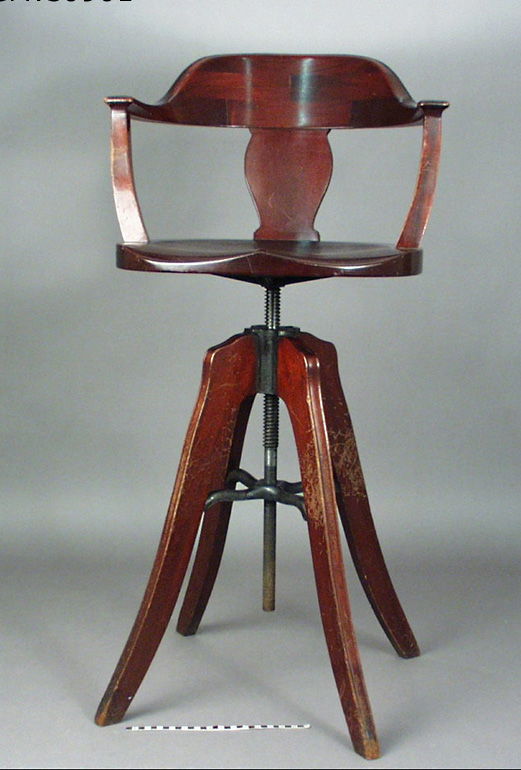
4018
Desk chair
A desk chair from the trading firm A. Magnus & Co, Magasinsgatan 24, Gothenburg. The chair is made of mahogany and has an adjustable seat with a steel screw mechanism.”

4019
Footstool
A footstool from the trading firm A. Magnus & Co, Magasinsgatan 24, Gothenburg. The footstool is made of wood and consists of a rough board that is slanted, with two legs made of pieces of board on the short sides.

4020
Banknote wallet
A bag, or briefcase, from the trading firm A. Magnus & Co, Magasinsgatan 24, Gothenburg. The bag is made of leather and has three compartments for documents.
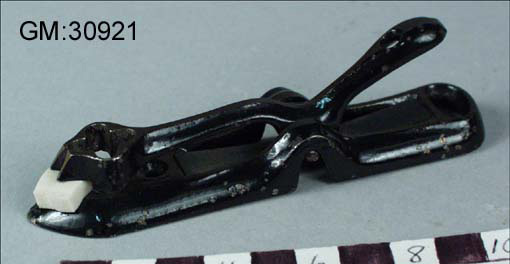
4021
Paper clip
A paper clip made of steel from the trading firm A. Magnus & Co, Magasinsgatan 24, Gothenburg. The clip is used to hold together papers.
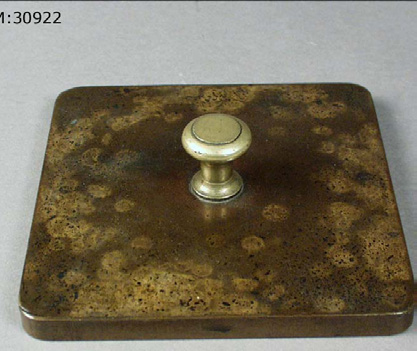
4022
Letter press
A letter press made of steel from the trading firm A. Magnus & Co, Magasinsgatan 24, Gothenburg. The letter press is square, with a brown mottled color and a brass knob handle in the center.
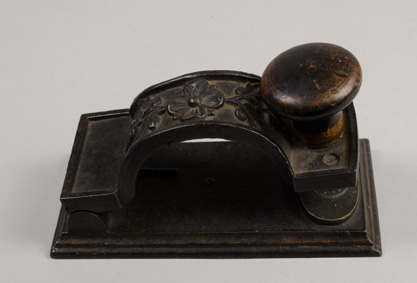
4023
Embossing stamp
An embossing stamp, or marking die, from the trading firm A. Magnus & Co, Magasinsgatan 24, Gothenburg. The stamp was used to mark letterheads and envelopes. It consists of a kind of iron clamp with hinges, which is pressed together with paper in between. The paper then receives an embossed mark, in this case, an oval shape with the text ‘Magnus & Co Göteborg’.

4024
Ruler
A wooden ink ruler from the trading firm A. Magnus & Co, Magasinsgatan 24, Gothenburg. The ruler has a triangular shape and is wider on one side than the other. It measures 54 cm in length, but the ruler does not have any measurements indicated.
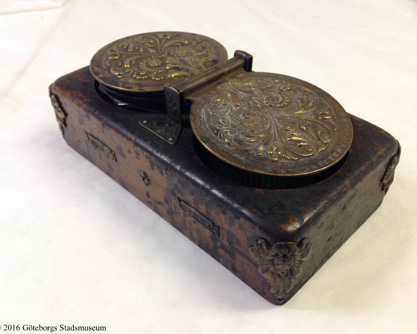
4025
Ink well
An “ink well” from the trading firm A. Magnus & Co, Magasinsgatan 24, Gothenburg. The ink well was manufactured in the 1870s in the Neo-Renaissance style. It is 18.5 cm long and 10 cm high. The ink well consists of a rectangular block of wood with two holes containing two cylindrical ink wells made of pressed glass with a ribbed pattern.
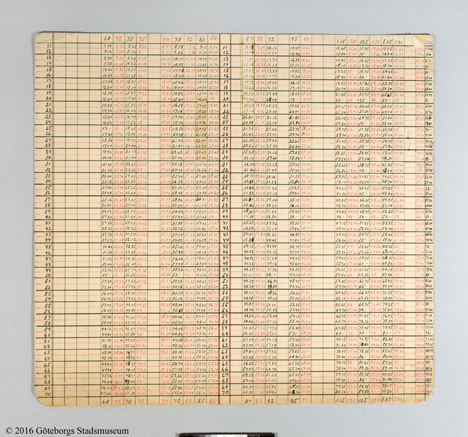
4026
Price list
A “price list” made of stiff paper from the trading firm A. Magnus & Co, Magasinsgatan 24, Gothenburg. The price list is nearly square, 33 cm x 31.5 cm, and displays several columns with numerical data. The numbers are handwritten in red and blue ink.
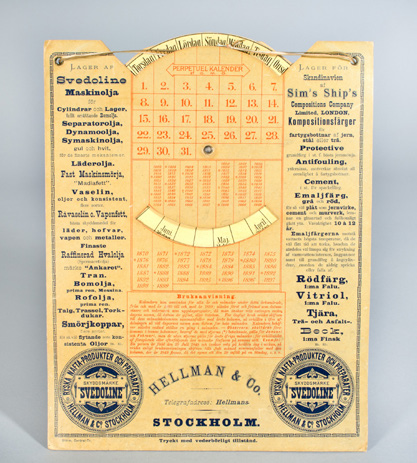
4027
Wall calendar
A wall calendar made of cardboard, likely manufactured in the latter part of the 19th century. The calendar is rectangular, 30 cm tall and 23.5 cm wide, with printed text in blue and red. Designed to be usable for several years, it includes a table with weekday numbers and years, along with a window for a rotating cardboard disk.

4028
Ink pens
Ink pens in various colors, with nibs. When using the pen, the nib is dipped into liquid ink.

4029
Stamp
A stamp from Skandinaviska Banken, Stockholm. The stamp has a rounded handle made of black-stained wood. The lower part, which includes the actual stamp, is made of metal.
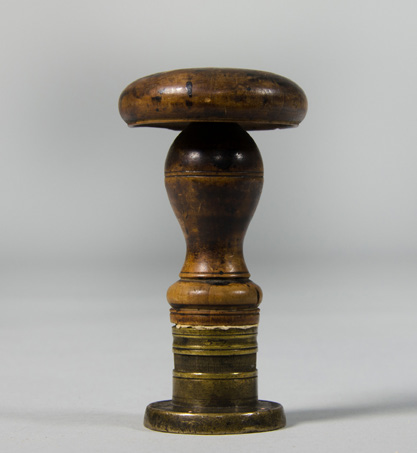
4030
Seal stamp
A seal stamp depicting the seal of the commander of Gothenburg. The stamp has a rounded handle made of wood, with the upper part rounded. The handle is natural wood-colored, while the lower part containing the seal is made of metal
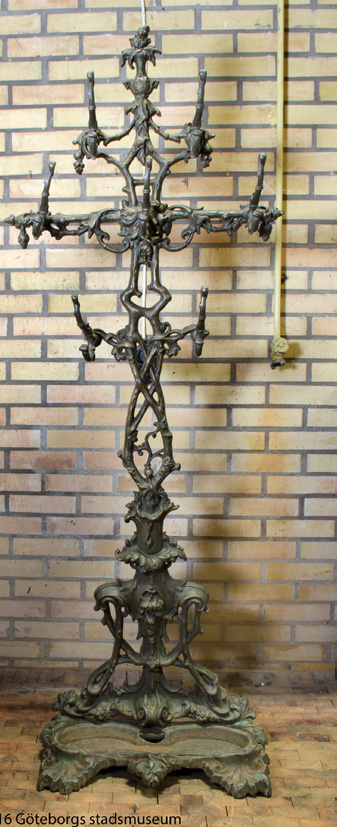
4031
Clothing rack
A clothing rack made of cast iron, likely manufactured by Kockums in the 1870s. The clothes rack is a two-meter-long structure ornamented with leaf patterns.

4032
Desk pad
A foldable desk pad made of cardboard from the trading firm A. Magnus & Co, Magasinsgatan 24, Gothenburg. One side is externally covered with black oilcloth, while the other side is green-patterned and considerably worn.
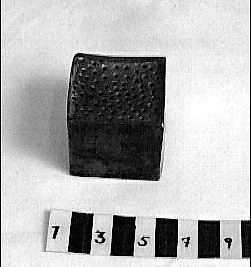
4033
Sand box
A sand box, made of brass. The sand sprinkler was used before blotting paper became common. Sand was poured over the paper to help the ink dry and prevent smudging.